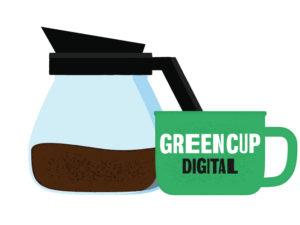Are you thinking about a new website or finally ditching that outdated one? Before you get lost in the fonts and color palettes, one decision can make or break your site: single-page or multi-page?
Not sure what that even means? You’re not alone. Most people don’t know what a single-page website is — it sounds like something your sister made on Wix in 2011. But trust us, the structure of your site matters more than you think. The wrong setup can tank your Google rankings, confuse your visitors, and leave your big ideas stuck in a tiny layout.
In this post, we’ll break down the difference (with zero tech jargon), so you can build a new website that actually works for your business, not just one that looks good.
Spoiler alert: Your site’s structure affects much more than just how pretty it looks. It impacts user experience, SEO, conversions — basically, the whole success story you’re trying to write. Choosing the proper setup ensures your new website actually supports your business strategy, rather than becoming a hot mess.
In this post, you’ll get the information you need to make a smart decision based on your business goals, audience, and how much chaos you’re willing to manage later.
New Website Basics: What is a Single-Page Website?
A single-page website, also known as a one-page site, keeps things blissfully simple. Instead of sending users clicking around to find what they need, everything — your homepage, services, about info, and contact details — lives on one long, scrollable page.
We don’t know about you, but we like things that are easy. Like flipping a light switch or ordering takeout from your favorite spot — one decision, one path, done. That’s the magic of a single-page website: it gives your visitors everything they need, all in one place, without making them work for it.
With just one page, navigation is seamless. Visitors either scroll naturally or use anchor links (those handy “jump to section” buttons) to get where they want to go. No back-and-forth clicking, no decision fatigue — just a clear, focused experience.
Benefits of a Single-Page Website
Single-page websites are simple, streamlined, and surprisingly powerful when used right.
Here’s why they work:
- Simplified Navigation: With everything on one page, your visitors have no excuse to get lost.
- Mobile-Friendliness: Mobile users don’t want to tap through 18 pages. A single page makes it easy to swipe, scroll, and stay interested.
- Lower Maintenance: Fewer moving parts mean fewer headaches when it’s time to update or fix things.
Plus, with no other distractions, your site can actually tell a story — leading users exactly where you want them to go.
Drawbacks of a Single-Page Website
As much as we love a simple setup, there are some real limitations:
- SEO Limitations: Good luck trying to rank for multiple keywords when you’ve only got one page to work with.
- Growth Restrictions: If your business scales (fingers crossed), you’ll quickly outgrow a single-page setup — and yes, that means redoing the whole thing.
- Content Cramming: Trying to stuff too much information into one page is a fast track to overwhelming your visitors. Scroll fatigue is real.
Bottom line: If you need more than a quick pitch, a one-pager might not cut it.
Best Use Cases for a Single-Page Website
Single-page sites are ideal when you want to keep it simple and get straight to the point.
Perfect for:
- Simple Services or Products: One killer offer? Showcase it in style.
- Event Promotions: Event info, RSVP button, done.
- Portfolios and Personal Brands: Creatives, freelancers, consultants — flex your work without making people dig for it.
- Online Resumes: Because handing someone a 20-page site for your work history is… not it.
New Website Basics: What is a Multi-Page Website?
A multi-page website is what most of us picture when we think of a “normal” website — and by “normal,” we mean the kind that’s been around since dial-up days and Netflix DVDs in the mail.
You’ve got your homepage, About page, Services, Blog, Contact — all neatly tucked inside their own links in the menu. But hey, there’s a reason it’s still going strong: it works when you have more to say than will fit on a single scroll.
Instead of cramming everything into one spot, you can spread your information logically. No need to play digital Jenga with your content!
Benefits of a Multi-Page Website
Multi-page websites come packed with advantages — especially if you have a lot to say (or sell):
- Stronger SEO: More pages = more keywords = more chances to show up in Google searches.
- Scalability: Launch new products, add services, build an empire — all without blowing up your current site.
- Clear Organization: Visitors can easily find what they’re looking for without pulling their hair out.
When you need to grow or dominate your niche, a multi-page site is the workhorse you want.
Drawbacks of a Multi-Page Website
Multi-page websites aren’t all sunshine and rainbows:
- Higher Maintenance: More pages = more chances for broken links, outdated info, or design nightmares.
- Slower Load Times: Especially if you get carried away with fancy animations and huge image files (we’ve all been there).
- Risk of Confusion: If your site isn’t organized clearly, visitors might bounce faster than you can say “404 error.”
In short: You’ll need to keep it clean, fast, and easy to navigate — or risk losing people before they even read a headline.
Best Use Cases for a Multi-Page Website
Multi-page sites are designed for businesses that need space to breathe. You might want one if you have:
- E-commerce Stores: Hundreds of products need hundreds of product pages. Period.
- Large Brands: Multiple services? Multiple audiences? You’ll need multiple pages.
- News and Media Sites: New articles every day? Good luck fitting that on a one-pager.
If your business offers more than one or two services, you’ll need more than a single-page site.
Final Thoughts: Which New Website Structure Should You Choose?
Choosing between a single-page and multi-page new website design comes down to your business size, your goals, your audience, and — let’s be real — how much you want to deal with managing it all.
- If you’re launching fast with one clear offer (and you like the idea of a no-fuss site), go with a single-page.
- If you’re building a brand that needs room to grow, a multi-page site is your ticket to the big leagues.
Not sure where to start? Let’s break it down:
- Define your business needs: Are you offering one thing or juggling multiple services/products?
- Consider your future growth plans: Will your site need to expand or stay pretty much the same?
- Evaluate your audience and SEO needs: Do people need more than one page to understand your magic?
- Check your budget and resources: Can you afford to build big now, or does it make sense to start lean?
Still feeling stuck?
Take our quick Find Out Your Marketing Style quiz and get personalized recommendations — because guessing is overrated and you deserve a website that actually works!






